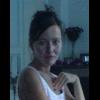well, I avoid the filters in that study (except octocrylene). I still maintain that sunscreen use is better than bare skin because regular use of sunscreens decrease the formation of damaged skin resulting in actinic keratoses for example. This is just an experimental study, the real life decrease in freckling and AKs proven in in vivo studies says sunscreens are better than going bare (even if they produce ROS).
There are so many filters available here in europe that you can get a good sunscreen formulated not to increase the ROS load. Loreal, Neutrogena and Aveeno for example have these stabilized sunscreens.
Fredrik:
The suncreen I'm using at the moment is a product endorsed by the cancer council of Australia. It's called Ultra sunscreen Exta UVA protection but the main ingredient is:
Octyl Methoxycinnamate.
Should I be considering another sunscreen? I invested in a wide brimmed Akubra hat as well. The sunscreen you have to reapply but the hat lasts 10 years
I don´t know the rest of the filters in that sunscreen but the hat is an excellent move. I would look for a sunscreen with avobenzone stabilized by octocrylene and/or Tinosorb S/Tinosorb M and/or Mexoryl SX/XL. FDA will also approve the combination of avobenzone + zinc oxide soon (if not already finalized).
Non-US sunscreens I like: La Roche Posay fluid extreme spf 50+ and Bioderma photoderm fluide spf 50+
US-sunscreens that are ok (I´d still go with a european brand mentioned by me or Eva as they have more UVA-filters): Neutrogena sheer spf 50+ and Aveeno spf 45 or one of Loreals daily UV sunscreens (Skinceuticals, Lancome or Anthelios).
















































